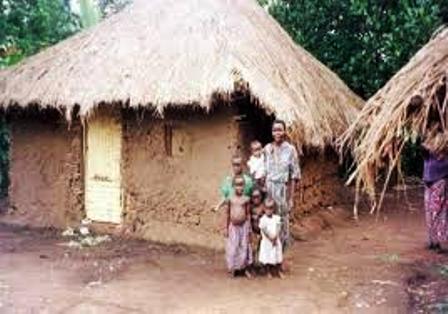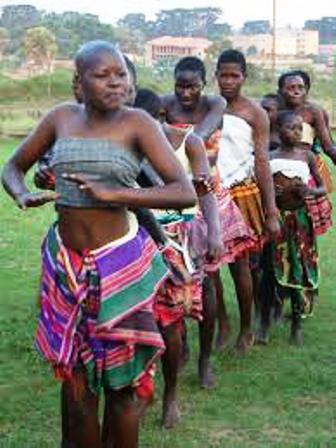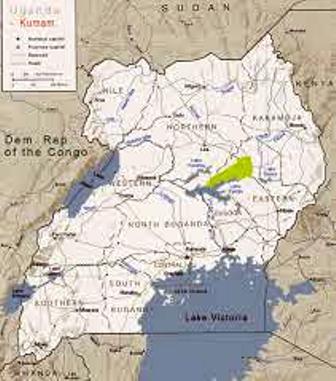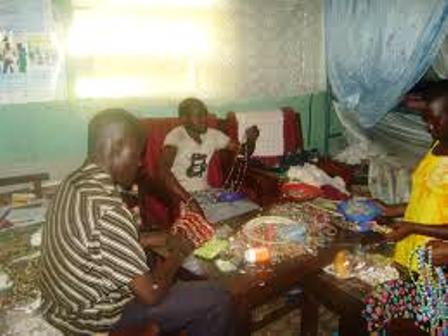Kumam People and their Culture in Uganda
Who are the Kumam People in Uganda? The Kumam belong to the Atekerin family together with the Langi, the Iteso and the Karimojong.
This is the group of people which is often referred to as the Nilo-Hamites. They live in the western areas of Teso and south-east of Lango.
In Teso, they are found in the counties of Kaberamaido, Soroti and Serere and, in Lango, in the county of Kioga.
Today, they can also be traced in other areas of Uganda particularly in Busoga, Tororo and Buganda.
Although they speak a Luo dialect, their language is not Luo. It is Kumam. The Kumam language is over two-thirds Luo and one-third Ateso.
Origins of Kumam people
Historians claim that the Kumam came from the north-east in the direction of Ethiopia from around A.D. 1600. It is further asserted that they derived from people who were originally Ateso speakers and who later learnt Luo.
It is said that due to contact with the Luo-speaking peoples from around Mt. Otukei and Wila in Karamoja, the Ateso (Dum) speech was abandoned and the Luo speech was adopted.
They claim that their former name was leno. This can be evidenced by such phrases in their language as yo lango (path), pale lango (home), yat lango (medicine) and several others. They have common characteristics with the Iteso and the Lango with respect to birth rituals, certain social customs and hunting practices.
The Karimojong use the same word Kumama when referring to the Iteso, the Langi and the Kumam. It is generally agreed that Kumam is derived from the Lango word Akum, meaning those people of the former Teso district who included the Iteso and some Ikokolemo. Ikoku is an Iteso word meaning "child" while elem is a Luo word meaning headdress.
This means that the Kumam are a mixture of Luo and the Atekerin possibly as a result of intermarriages between the Luo and Ateker-speaking peoples.
As the Luo settled in northern Uganda, they came into contact with the Atekerin peoples who were also at the same time moving from the northeast and founding settlements in northeastern Uganda.
The fact that their language is half Luo and half Ateker, lends some truth to this presupposition. Another legend talks of a boy who stole elem and fled somewhere with it and his descendants became the Kumam.
Location of Kumam people:
The Kumam are a people of about 150,000 living south of Lake Kwania, in western Teso district of Uganda. They are neighbors of the Teso and the Lang'o (Lang'i).
History of Kumam people:
The Kumam were originally a Plains Nilote people, related to the Teso and Karamojong. They were affected by the migration of the Lwoo Nilotic people group from the Sudan beginning in the 1400s. As these Lwoo-speaking River-Lake Nilotes pressed in, the Kumam were one of the groups who gradually accepted the Lwoo speech.
The period of insurgency in the north from 1986-1992 resulted in displacement, loss of property, and the death of many people. Traditional bases for wealth vanished as raiders stole herds of cattle. Tribal belief systems are perceived to have failed, and people search for a foundation for their lives.
Identity of Kumam people:
The Kumam are part of the Nilotic peoples. They were part of those called Plains Nilotes, but now speak a language of the Lwoo group which expanded rapidly in recent history from the area of the Nile area of southern Sudan.
Kumam traditions say they were part of the Teso people. The Teso speak a Plains Nilote language related to Karamojong and were part of the same early migration as the Kumam.
Language of Kumam people:

The Kumam speak a language of the same name, in the Lwoo (Luo) group of Nilotic languages. Some linguistics classify it with the Dinka group (Sudan) and some with the Southern Luo group, which includes Luo of Kenya, Lang'o of Uganda and Alur of Zaire and Uganda.
Kumam is very similar to Paluo (Dhopaluo) and Lang'o, more distant from Acholi: It is written in a Latin alphabet.
The Kumam, like the Lang'o people (Lang'i), were originally a Plains Nilote people who gradually accepted the Lwoo speech of the newcomers.
The Alur, formerly speaking a Sudanic language, also adopted Lwoo speech, as well as accepting Lwoo clans as royal. There are radio programs in the language and literacy programs are underway. There is no Bible in Kumam.
Religion of Kumam people:
Religious adherents among the Kumam are difficult to determine. Available statistics are based on geography, not ethnography. Kumam population is too small a percentage of district population for the statistics to have much meaning.
The political set up of Kumam people
They had a loose political structure under clan leaders known as wegi Atekerin. Other people of importance in the society were wegi ikodeta Cel (leaders of dancing groups), and leaders of Asonya homes, wegi Cel.
The wegi Cel were in most cases Dogolan or Odonge ikekoros (heads of part of a clan descending from one man). These clan leaders were responsible for the maintenance of law and order as well as general administration. They arbitrated in matters of politics and social affairs.
Traditional marriage among Kumam people
Previously, the parents would arrange marriages for their children. Girls of tender age would be betrothed to boys. In effect, the young girl would become wife to a respective boy but she would wait to be officially handed over when she came of age.
In some cases, the young girls so betrothed would be taken to the boy’s home to grow up there. When she came of age, a ceremony would be organized to formalize the relationship.
With time however the system changed. A boy would look for a girl and without the consent of the parents sneak with her to his home at night.
After a week or so, the girl’s relatives would begin to look for her. Obviously they had some prior knowledge of her whereabouts. On discovery, a fine would be exacted form the boy. Arrangements would be made to settle the bridewealth and the marriage would be formalized.
If the girl’s parents did not trace her where about, it was normal for her to go home and tell them what had happened other. Then due arrangements would be made to obtain the fine and bride wealth from her husband. The normal procedure was that the girl’s relatives would go to the boy’s home where the bride wealth would be negotiated.The cows could be taken that same day. It ranged between twelve to fifteen heads of cattle. The exact number depended on how hard working the girl was.
Economy setup of Kumam people
The Kumam were originally pastoralists, They reared cattle, sheep, goats and chickens. Today they are partly pastoral and partly agricultural. Their staple food crops are kal (millet), bel (sorghum), kat (potatoes) with peas and beans as a common sauce. Land was communally owned by a clan. Any member of the clan was fully entitled to use it. Women and children did not own land.
The women owned utensils which included agulu (big pots), tabo (small pots), itany (plates made from clay) as well as a variety of baskets and mats. The Kumam people were prone to the influence of the Luo. The Kumam language has a high percentage of Lwo words.
More about Afican Culture
Kenya Culture | Akamba | British Colonialists | Crafts | Cultural Business Meetings | Cultural Communication | Cultural Eye Contact | Cultural Gestures | Gift Giving | Cultural Law | Cultural Music | Cultural Space | Cultural Time | How to Talk in Kenya |
Recent Articles
-
Garam Masala Appetizers ,How to Make Garam Masala,Kenya Cuisines
Sep 21, 14 03:38 PM
Garam Masala Appetizers are originally Indian food but of recent, many Kenyans use it. Therefore, on this site, we will guide you on how to make it easily. -
The Details of the Baruuli-Banyara People and their Culture in Uganda
Sep 03, 14 12:32 AM
The Baruuli-Banyala are a people of Central Uganda who generally live near the Nile River-Lake Kyoga basin. -
Guide to Nubi People and their Culture in Kenya and Uganda
Sep 03, 14 12:24 AM
The Nubians consist of seven non-Arab Muslim tribes which originated in the Nubia region, an area between Aswan in southern










New! Comments
Have your say about what you just read! Leave me a comment in the box below.